When I first started trimming, I was on a mission to prove that barefoot was best for every horse. The equine industry is stuck in the dark ages in so many ways and I thought I could inspire some change.
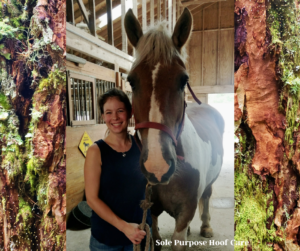
Baby Corrie ready to take on the world!
I happened to start my career in an area that was filled with the good ole boys club. I came across farriers who drove big trucks with Confederate flags and laughed as they told stories of abusing horses – one told me how he grabbed onto an electric fence and used his body as a conduit to shock the horse standing nearby and another yelled at and elbowed the horse I was holding for moving one inch while he was underneath her.
I knew there could be a better way. I knew I didn’t fit in with that crew and wanted to forge my own path. But when I got my first Hoofjack, I made sure to pick the green one even though I really wanted the purple one. I figured there was no way anyone would take me seriously if I showed up with a purple hoof stand. I was conflicted! I hadn’t yet gained the confidence to be myself regardless of the environment I was working in.
Unfortunately, I also lumped metal shoes and uneducated trimming techniques in with the good ole boys and didn’t stay open minded. Shoes were bad, farriers didn’t know how to trim, and I was going to show them!
At the time, there were common statements floating around that used to really make me mad.
“Horses can’t compete barefoot.”
This was and still is a very common phrase when the topic of barefoot vs. shod comes up. No one really cares if the pasture sound companion horse is out grazing barefoot. But if a horse is going to “do anything,” they need shoes. I would eagerly search online for stories of performance horses who were beating the odds. I would quiz my colleagues if they had any barefoot horses in competition. I discovered many photos of famous racehorses and zoomed in to see how awful their hoof health was. Nothing was more frustrating at the time than getting a horse’s feet more sound, only for the owner to turn around and hire someone else to put shoes on.
Can horses compete barefoot?
100% yes they can. You can find all kinds of examples of this, at the highest levels of many disciplines.
Can all horses compete barefoot?
Definitely not. Each horse is a unique individual with their own case history and environment. Even if every owner was super dedicated to barefoot, some horses do need hoof support to perform.
I no longer care if people think horses need shoes to compete. It’s your horse, your decision. I do think that young horses would benefit from remaining barefoot as long as possible, and if they are allowed to develop healthy feet there is no reason why you would potentially need shoes until a certain level (needing traction for cross country, sliders for reiners, etc).
I also no longer see this debate as such a black and white situation. You can do whatever you want! You don’t have to subscribe to one way or another. I think a great compromise would be allowing horses to be barefoot on a short trim cycle for a few months of the year and being shod if needed for competition months. Horses are not designed to perform day in and day out all year round, so why not give their feet a break as well? Ideally you would have a hoof care provider who can offer everything, but if not you could use your talented shoer during competition/training months and your talented trimmer during the off season.
“Not all horses can be barefoot.”
This one used to make steam come out of my ears. Honestly, I always took this personally. Usually because people made sure to say it loudly whenever I showed up to the barn. I doubt they ever lectured their shoer about this. But when a barefoot trimmer came around, they needed to make sure I understood their opinion. I always considered this statement a challenge! I don’t like being told what to do. And I had plenty of success maintaining barefoot horses when I was told it wasn’t possible. However, I have come to agree wholeheartedly – not all horses can or should be barefoot.
Moving from the east coast to the west coast meant a big change in the environment I was working in. There are several factors in the Pacific Northwest that make having sound barefoot horses (over all surfaces) a challenge. I no longer think it’s okay to allow horses to be sore or gimpy over hard surfaces just in the name of “being barefoot and natural.” Occasional soreness is something that can happen, whether horses are barefoot or shod, but we should always figure out why as soon as possible.
I have clients who have literally tried everything and their horses still need some kind of hoof protection. That is not a “failure,” it’s just what their horse needs. The great thing is that we have so many options for hoof support if clients don’t want to go back to steel shoes – boots, glue ons, composites, FormaHoof, casting, etc. And I also (GASP) have recommended clients put steel shoes back on. Every case is different.
“This horse just has bad feet.”
Most horses are born with perfectly normal and healthy feet. Many hoof distortions or dysfunctions are created by humans in one way or another. Limited movement, high sugar/carb diets, trim/shoeing cycles that are too long, not providing babies with hoofcare from the beginning, breeding horses without prioritizing healthy conformation, getting started/shod too young before everything has developed.…the list goes on.
Honestly, this statement still makes me annoyed. It’s a kind of throwing your hands up in the air, refusing to take responsibility, oh well kind of attitude. I can’t think of a single horse that I have met where I have felt that way. There is always a path towards rehabilitation. Some hoof issues can absolutely be permanent or always need to be managed, but huge progress can be made in most cases.
If your farrier can’t explain to you WHY your horse’s feet are the way they currently are OR isn’t interested in investigating or experimenting, this attitude of “well, they’re just bad feet” may be in play.
There are some horses on my schedule who are at the “this is as good as it’s going to get” stage (A “Princess Diaries” film reference for anyone, haha). For various reasons, we have achieved all the hoof rehab we can in the environment, with this owner’s time/budget, with this horse’s unique case history.
“Barefoot just didn’t work for my horse.”
It’s easy to judge someone who says this, especially if you’re a hardcore “barefoot is best” kind of person. Nothing is more simple to do than tell someone else how they should be doing something, or how they’re doing it w-r-o-n-g. I have fallen into this trap many times myself.
The barefoot gospel apologists want you to convert. Somehow if one horse “can’t” go barefoot, it is bad advertising. But I no longer subscribe to that mentality. I don’t need to be the PR rep for the barefoot horse lifestyle. There is one online magazine I am thinking of in particular that takes their role as “barefoot” marketers very seriously, unfortunately to the detriment of owners, professionals, and the ongoing conversations around hoofcare.
I love educating owners and helping rehab unhealthy feet. Ultimately though, none of these horses are actually mine. Owners have to do what they think is best for their horse.
Have you found yourself saying any of the above statements? Have you heard them while at the barn?
It’s a waste of my limited time and energy to get too upset about what other people are doing with their horses. I love that we can change our minds over time. When we know better, then we can do better.
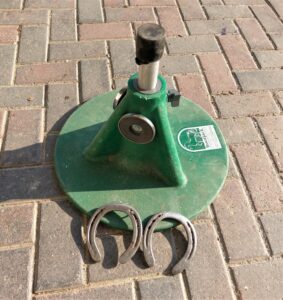
My beloved green Hoofjack and the very set of shoes I ever pulled!

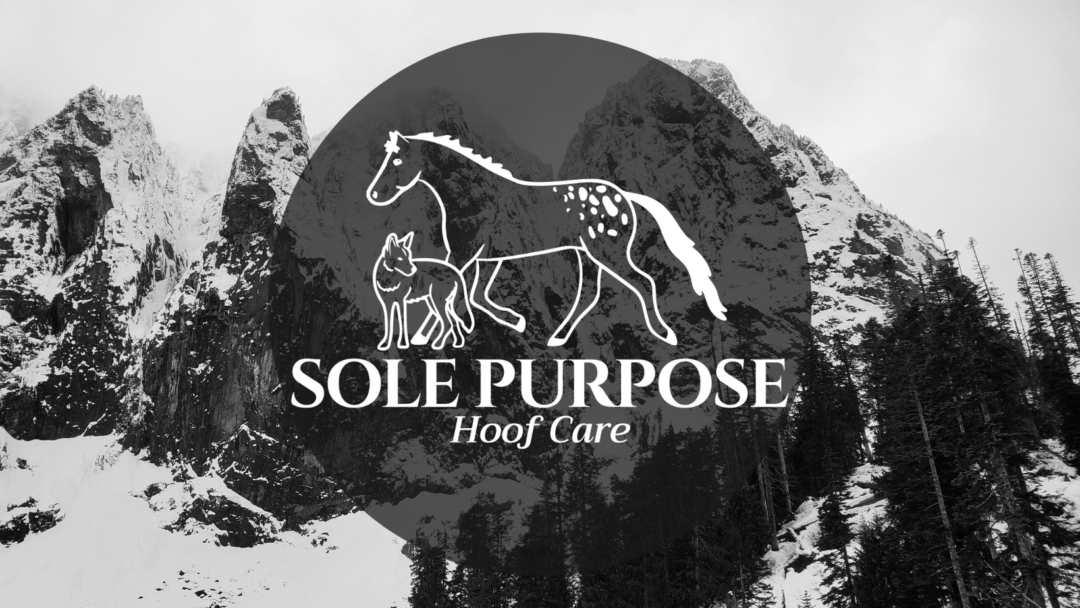
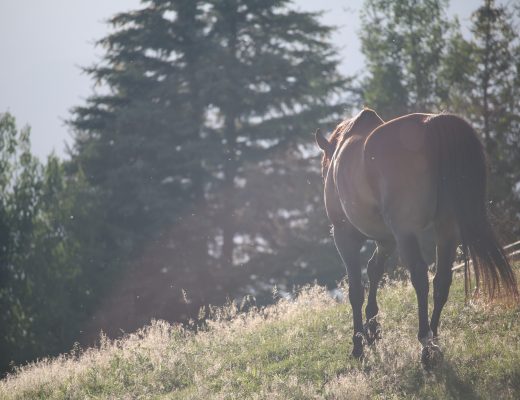

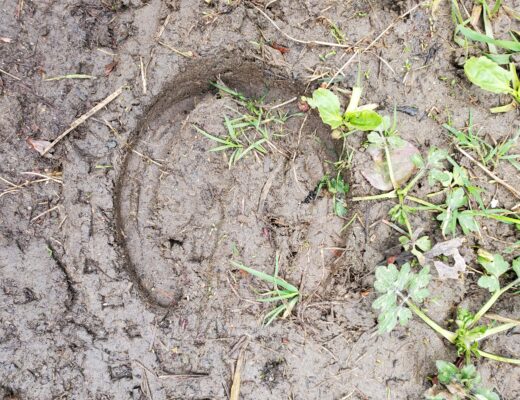
No Comments